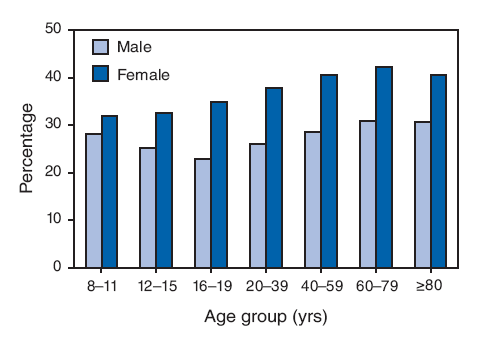Relative Fat Mass:
Table of Contents
Relative Fat Mass Chart
Calculate body fat percentage using the relative fat mass index calculator and compare your results against the rfm chart below. The values vary by gender so make sure to check your result against the appropriate column.
| Gender | Male | Female |
|---|---|---|
| Athletic | 6-13% | 14-20% |
| Healthy | 14-17% | 21-24% |
| Normal | 18-24% | 25-31% |
| Overweight | > 25% | > 32% |
What is Relative Fat Mass?
The Relative Fat Mass (RFM) is a measurement of body fat percentage in comparison to your entire body weight. Calculating your RFM is important because it provides early indications of health risks. An individual with a higher percentage of body fat has a greater risk of developing heart disease, stroke and other serious illnesses than someone with a lower fat mass.
How to Measure Relative Fat Mass
To measure your relative fat mass score, follow these 3 simple steps:
- Measure your height in centimeters.
- Measure your waist circumference in centimeters.
- Enter details in the RFM Calculator.
You will instantly get your RFM percentage as the result of this calculation.
Why Measure RFM?
The weighing scale is the most common method to figure out if you're in what's considered by most to be a healthy weight. But, if you're not a fan of it, perhaps you might like something else instead: relative fat mass. Relative fat mass is a way to determine more about your overall body composition instead of focusing on your weight alone.
It's a measurement that essentially divides body fat by weight to give you a percentage. It's not a perfect system, but it's one that many people are choosing to use instead of the more traditional BMI measurement.
Is RFM Better than BMI?
The accuracy of BMI has been called into question on several occasions in recent years, with some experts claiming that it is no longer a reliable measure of health. For this reason, researchers have been trying to find better ways to measure health, and one of the latest techniques to be developed is called relative fat mass (RFM). This is essentially a measure of the amount of fat a person has in proportion to their total body weight.
The RFM Calculator uses the height, waist circumference and gender to estimate the body fat percentage of an individual. The RFM calculator is considered to be a more accurate at determining the body fat percentage than the BMI calculator.
What is the Relative Fat Mass Index?
The relative fat mass index is a way to calculate one's body fat level, similar to calculating your BMI. The index is generally used to determine whether or not a person has a healthy weight.
An individual with a low fat mass index is considered to be lean, while someone with a high index is considered overweight or obese.
The rfm weight calculator is a useful tool to calculate your rfm index, which can be used to give an overview of your general health and fitness levels.
What is the Relative Fat Mass Formula?
The relative fat mass formula (or rfm formula) varies based on gender. You can calculate relative fat mass percentage using the following formula:
RFM Formula for Men
64 - 20 x (height / waist circumference)
RFM Formula for Women
76 - 20 x (height / waist circumference)
What is the Normal Body Fat Percentage?
The body fat percentage varies based on our age and gender. Women normally have a higher body fat mass than men.
According to a study carried out by the CDC between 1999 and 2004 (see chart below), we can see that the mean body fat percentage for men and women are presented as follows:
- Average body fat percent for men is from 24% to 30%
- Average body fat percent for women is from 32% to 42%

FAQS
Relative Fat Mass (RFM) is a measurement used to estimate body fat percentage. It is calculated based on height and waist circumference, providing a simple and accurate way to assess body fat levels.
RFM is calculated using the following formula: RFM = 64 - (20 x height/waist circumference) for men, and RFM = 76 - (20 x height/waist circumference) for women. The result gives an estimate of body fat percentage.
For men, a healthy RFM range is typically between 6-24, and for women, it's between 10-30. However, these ranges can vary based on factors like age, fitness level, and individual health goals. It's recommended to consult with a healthcare professional for personalized assessments.
RFM is considered a reliable and practical method for estimating body fat percentage. It can be as accurate as more complex methods like Dual-Energy X-ray Absorptiometry (DXA) or underwater weighing, while being much simpler to measure using just a tape measure and height.
RFM is a versatile measurement that can be used for a wide range of individuals. However, like any body composition assessment, it may have limitations for certain populations, such as athletes with extremely high levels of muscle mass. Consulting with a healthcare professional for personalized assessments is recommended.
Yes, RFM can be a useful tool for tracking changes in body fat percentage over time. By periodically measuring height and waist circumference, individuals can monitor their progress in terms of body composition and adjust their fitness and nutrition goals accordingly.